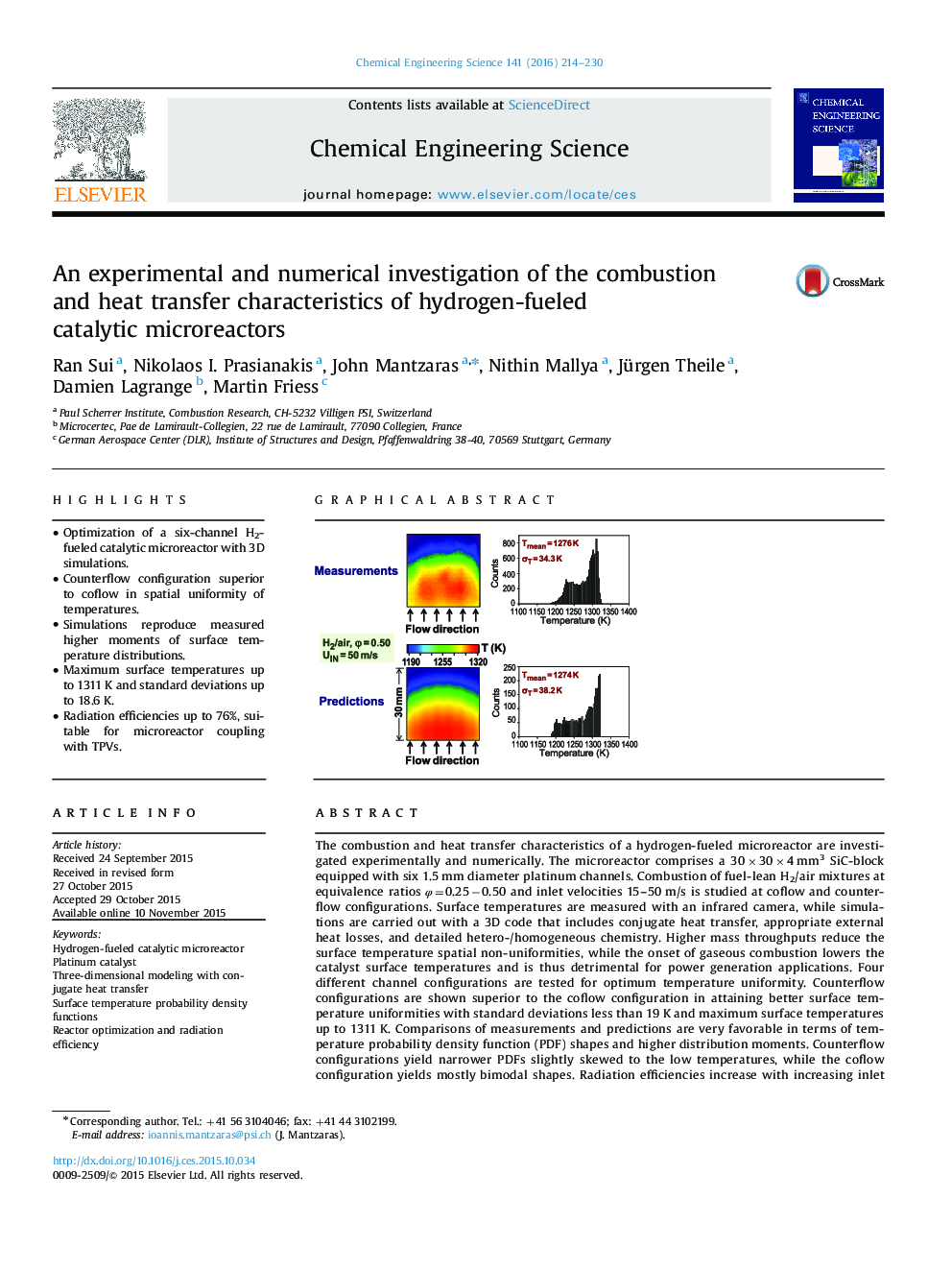| Article ID | Journal | Published Year | Pages | File Type |
|---|---|---|---|---|
| 154448 | Chemical Engineering Science | 2016 | 17 Pages |
•Optimization of a six-channel H2-fueled catalytic microreactor with 3D simulations.•Counterflow configuration superior to coflow in spatial uniformity of temperatures.•Simulations reproduce measured higher moments of surface temperature distributions.•Maximum surface temperatures up to 1311 K and standard deviations up to 18.6 K.•Radiation efficiencies up to 76%, suitable for microreactor coupling with TPVs.
The combustion and heat transfer characteristics of a hydrogen-fueled microreactor are investigated experimentally and numerically. The microreactor comprises a 30×30×4 mm3 SiC-block equipped with six 1.5 mm diameter platinum channels. Combustion of fuel-lean H2/air mixtures at equivalence ratios φ=0.25−0.50 and inlet velocities 15–50 m/s is studied at coflow and counterflow configurations. Surface temperatures are measured with an infrared camera, while simulations are carried out with a 3D code that includes conjugate heat transfer, appropriate external heat losses, and detailed hetero-/homogeneous chemistry. Higher mass throughputs reduce the surface temperature spatial non-uniformities, while the onset of gaseous combustion lowers the catalyst surface temperatures and is thus detrimental for power generation applications. Four different channel configurations are tested for optimum temperature uniformity. Counterflow configurations are shown superior to the coflow configuration in attaining better surface temperature uniformities with standard deviations less than 19 K and maximum surface temperatures up to 1311 K. Comparisons of measurements and predictions are very favorable in terms of temperature probability density function (PDF) shapes and higher distribution moments. Counterflow configurations yield narrower PDFs slightly skewed to the low temperatures, while the coflow configuration yields mostly bimodal shapes. Radiation efficiencies increase with increasing inlet velocity and equivalence ratio. Application of the microreactor to power generation systems, in conjunction with thermoelectric devices, appears quite promising given the attained good spatial uniformity and the high values of surface temperatures.
Graphical abstractFigure optionsDownload full-size imageDownload high-quality image (218 K)Download as PowerPoint slide
